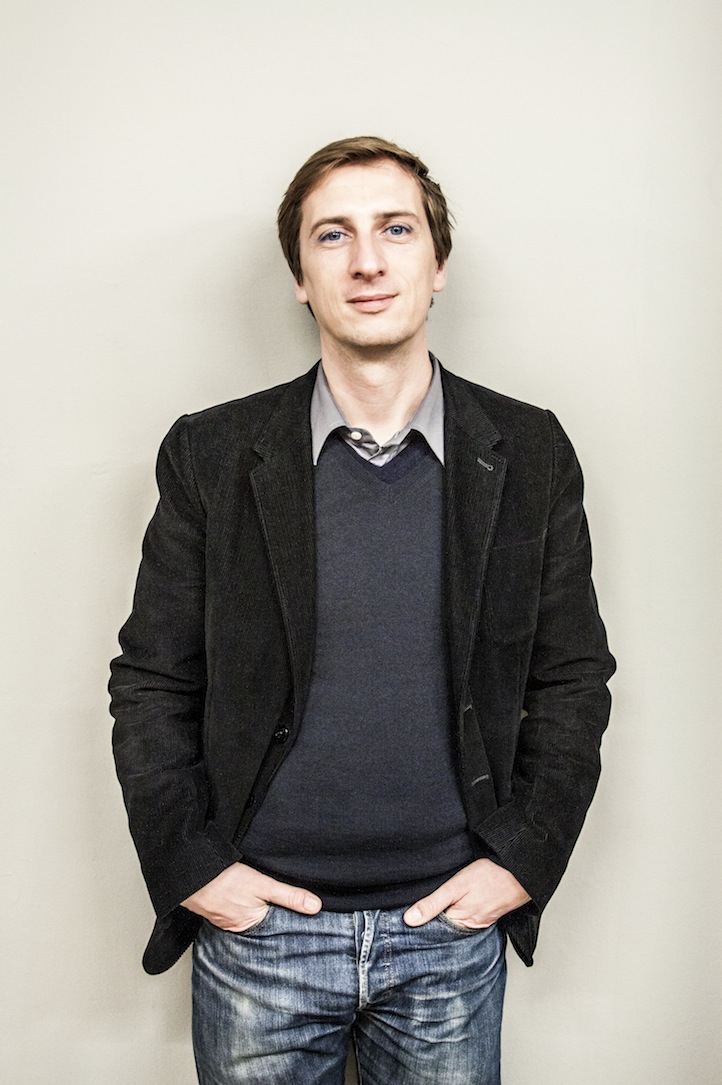Creative Force Philippe Nigro Collaborates with Hermès
10.03.2013
ART & DESIGN

Artist Philippe Nigro is no stranger to the world of art and design. After working alongside mastermind Michele De Lucchi, Nigro eventually stepped out on his own and created a world of craftsmanship, elegance and refinement. Fresh on the heels of his latest collaboration with Hermès titled “Les Nécessaires d’Hermès,” we spoke with the creative force about the vision behind his nine-piece collection.
Life+Times: You were born in Nice, France. What was your upbringing like? Were you a creative and curious child?
Philippe Nigro: I was lucky to be born in an exceptional area for many reasons, one of which is certainly the cultural and artistic wealth, due to the passage of many artists. I keep a very strong influence of the “École de Nice” and the “Nouveaux Réalistes.” Around the age of 15, thanks to a very good art teacher, who remained a close friend, I had the opportunity to direct my studies very early in Antibes, to Applied Arts, among which is the industrial design that I have chosen. I then pursued graduate studies in Lyon and Paris.
L+T: You worked alongside Michele De Lucchi for quite some time. What did you learn under his guidance and mentorship?
PN: Michele is not someone who gives lessons, you have to be careful and learn what to take and view the collaboration; it is sometimes very subtle. What I learned from him is most probably the consciousness to know the importance of challenging a project to arrive at the best solution. He also taught me to have an experimental, curious, free spirit, and also have humor.

L+T: How do you categorize what it is that you do? How do you define your craft?
PN: I do the projects according to what it is asked, needed by the customer and the function or image to improve. I think the role of the designer is to learn to take a step back from the situation in order to analyze and offer the most relevant possible answer. So I think the designer must not impose a style but be able to adapt to the context each time something different. This may seem surprising, but it is for me what is right.
L+T: You’ve worked on so many different projects. If you had to pinpoint one that you are most proud of – what would it be and why?
PN: I am proud of each project, but compared to my previous answer, Confluence for Ligne Roset, Pilotis for DePadova, Les Nécessaires for Hermès are successful for me by the feeling of a good interpretation of the codes of the brand through these objects.
L+T: You’ve recently teamed up with Hermes on their latest furniture collection titled “Les Nécessaires d’Hermès.” How did this collaboration come about?
PN: It was born by the meeting between the people of the art direction of the Maison and the common interest to do something together.

L+T: Upon hearing that the house of Hermes was interested in working together, what was your initial thought? What was your initial reaction?
PN: I was very impressed because Hermès impresses with its history, its quality by its exclusivity. It is a “monument.” The best way to stick to the project was to try to get into the deep universe of the brand that I had a rather superficial knowledge. It was a full and exciting immersion for two years and a wonderful experience thanks to the beautiful relationship with people.
L+T: The collection is comprised of nine versatile pieces. Can you tell me a little bit about them? I know you’ve referred to the collection as ‘the refined humor’.
PN: They are nine pieces, discrete, non-protagonist in an interior but useful and complement of usual functions in an interior. The peculiarity is that they have been designed to perform one or more functions and these functions are sometimes hidden so they cause a surprise that I hope will create complicity between the object and future user. They are also well made by excellent craftsmen and the perfection is evident. The general line is very simple, it is often a kind of wooden structures, trestles, stilts that keep weightless these functions: sit, store, write, play, relax, pause, hide.

L+T: How has your view of Hermès changes since working with them – from a design perspective?
PN: Hermès was originally a saddler, who then made leather goods and clothing. There is one story in the furniture dating back to the ’20s. Then Hermès, three years ago, decided to get back in a new way to the furniture. Today and it shows without doubt, through Les Nécessaires, Hermès consider the design in the same way and may be better, than a furniture manufacturer that has only that specialty. There is a real ethics about conceptual, functional and quality. And Hermès provide the right ways to reach perfection without compromise.





